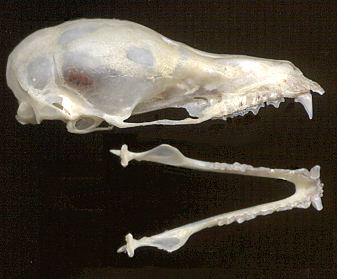

We usually think of bats as foraging for insects in the night sky—and for most temperate-zone bats, that's a reasonable thought. However, this underrates the diversity of bats. Some feed on fruit, some on small vertebrates and, of course, a few on blood.
One fascinating group depends on nectar and pollen. One could almost
consider them as night-time versions of hummingbirds except, as with all bats,
they're mammals. As a group, these bats are called long-nosed bats, and are part of
a large family commonly known as leaf-nosed bats after an erect, leaf-shaped flap on
the top of the snout. The long nose and a long tongue allow these nectar feeders to
reach deep into the flowers of such desert plants as agaves and selected cacti. The
three species of the northern Chihuahuan Desert are present only during the flowering
cycle of the plants they depend on, moving back south into warmer climes as the flowers
fade. In their nightly quest for food, pollen is carried from plant to plant, providing
a service few other animals can perform.

Contributor: Arthur H. Harris, Laboratory for Environmental Biology, Centennial Museum, University of Texas at El Paso.
Desert Diary is a joint production of the Centennial Museum and KTEP National Public Radio at the University of Texas at El Paso.

Skull and lower jaw of Leptonycteris curasoae, a close relative of L. nivalis. Note the elongated rostral area and the reduced dentition. Scanned image by A.H. Harris. Mammal Collection, UTEP 1537.
Arita, H. T. 1999. Mexican long-nosed bat/Leptonycteris nivalis. Pp. 78-79, in The Smithsonian Book of North American Mammals (D. E. Wilson and S. Ruff, eds.). Smithsonian Institution Press, Washington, D.C.
Villa-R., B. 1966. Los murcielagos de Mexico. Instituto de Biología, Universidad Nacional Autonoma de México. México, D.F., 491 pp.